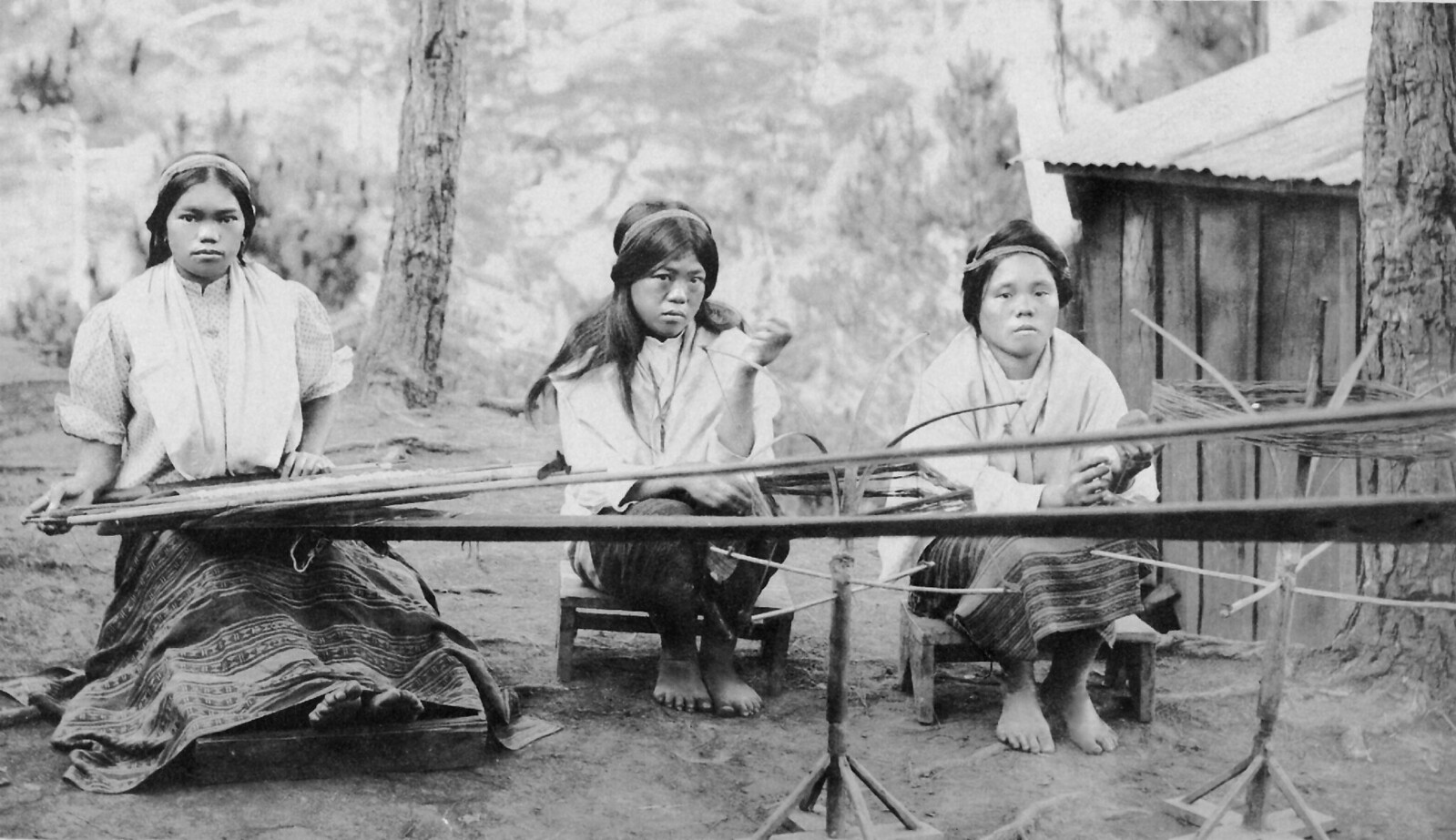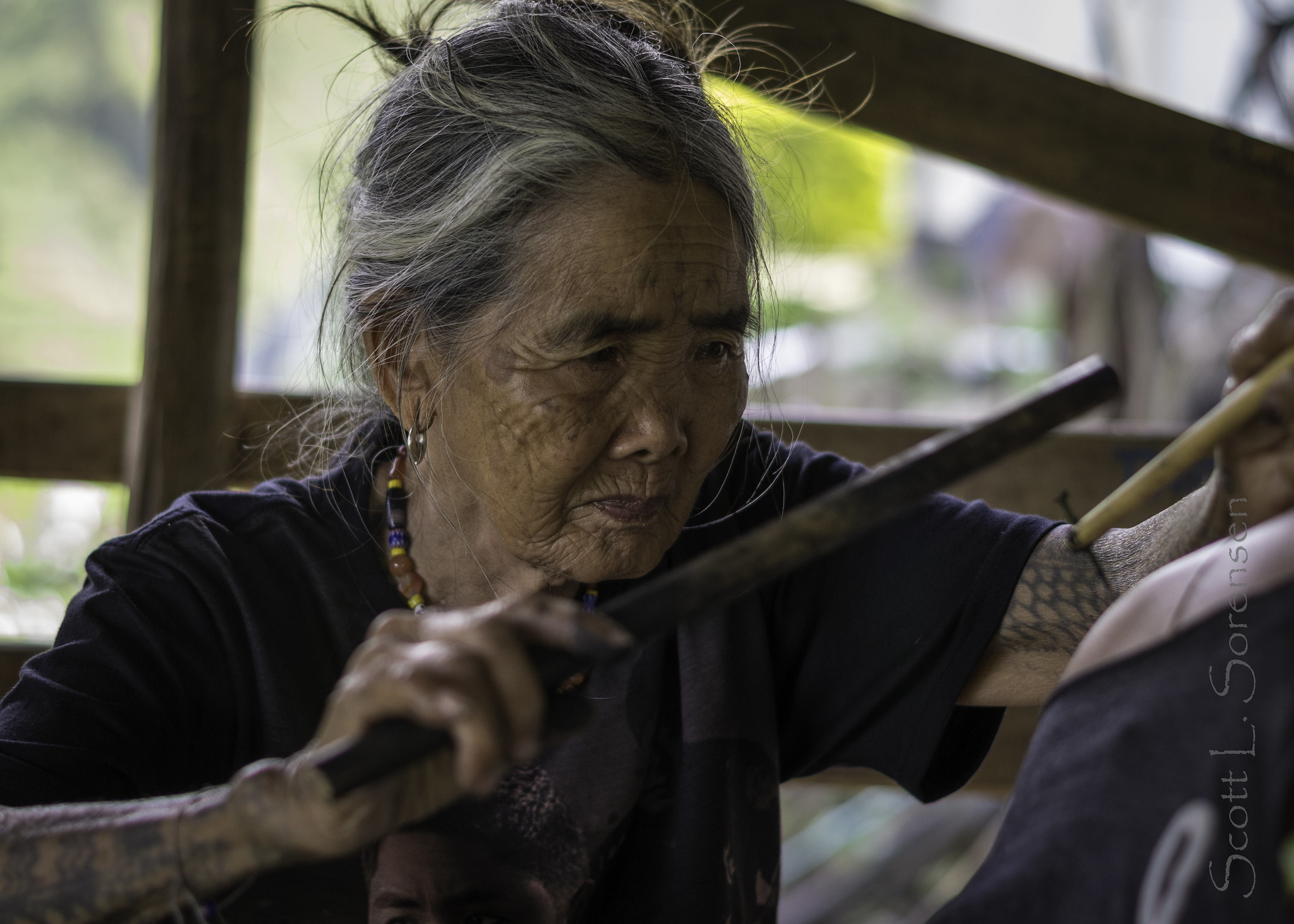According to local historians, the art scene in Baguio City started to flourish around the 70s. But if you truly look back on it, art has always been part of the city’s history. Each region in the Cordilleras shares pieces of their own culture in the different art forms that have now mingled, interwoven and flourished in the city. To better appreciate these artworks, it’s better to know the cultures and the rich histories that have molded them into what they are now.
Cordillera Weaves

Cordillera women weaving, Northern Luzon, Philippines, early 20th Century. PHOTO BY JOHN TEWELL/FLICKR
Cordillera Weaves is one of the trademark art forms in the region. These weaves tell stories of identity and change, and it is used in all stages of life from birth to death and from sickness to health. The designs of their weaves can also distinguish each group in the Cordilleras. The Ifugao Ikat, for example, can be identified by the diamond stripes of white and red stripes. And Bontoc weaves are characterized by geometric designs of things seen around like rain, lizards, men, and flowers. On the other hand, Kalinga weaves incorporate symbolism into their works. The colors red and indigo and red represent the sky and ground, while yellow represents wealth and refers to growth and fertility.
Wood Carving

Photo by Timothy Takemoto/Flickr
Among the best art forms found in Baguio City is wood carvings. Like the weaves, this art form did not originate in the city itself but the province of Ifugao. It is heavily linked to the culture of the area. As one of their stories go, the gods taught their ancestors how to carve the bulul, one of the more known wood carvings of the region, to protect their rice. The people treat these with the utmost care because they believe it holds the power of ancestral spirits. They’re often credited for increasing the rice harvest and protecting it from pests, thieves, and calamities.
Traditional Tattoo

Photo by Scott L. Sorensen/Wikimedia Commons
Apo Whang-Od gained international acclaim because of her traditional tattoos which are locally called batok. These tattoos date way back before the indigenous people of the people made contact with the outside world, and they’re considered a rite of passage. In the old days, warriors got these tattoos as a talisman, a mark of bravery, or as marks of the enemies they’ve conquered while the women got it to enhance their beauty. Not only that, a batok tattoo also symbolizes political and religious affiliations, as well as an archive of information or memories.

[…] in one of the Creative Cities, Baguio City will not disappoint if you want to explore your creativity and work with the ideas you […]